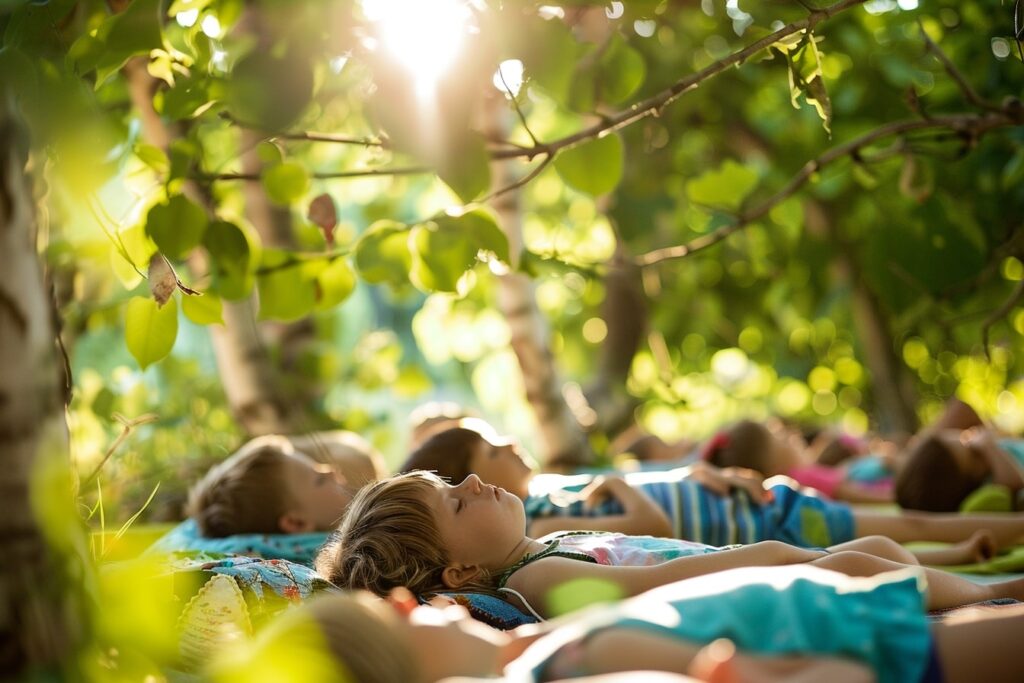Table of Contents
ToggleMontessori and Outdoor Sleep: Benefits of Fresh Air and Naptime
Imagine this: it’s a warm afternoon in the Caribbean, the gentle breeze carries the scent of blooming hibiscus flowers, and the sound of rhythmic waves lulls you into a state of tranquility. As a parent, you’re faced with the age-old dilemma of naptime – how to ensure your child gets the rest they need while also nurturing their sense of independence and connection to nature.
For many of us, the principles of Montessori education offer a guiding light in navigating this journey. Rooted in the belief that children are naturally curious, capable, and deserving of respect, Montessori philosophy encourages us to create environments that foster independence and self-discovery.
But what if we could take this philosophy one step further? What if we could harness the power of the great outdoors to enhance our children’s sleep routines and overall well-being?
This is where the magic of outdoor sleep comes into play. Drawing inspiration from Caribbean culture, where outdoor living is a way of life, we can create nurturing environments that honor both Montessori principles and our deep connection to nature.
In this blog post, we’ll embark on a journey to explore the synergies between Montessori philosophy and outdoor sleep, uncovering the myriad benefits it offers for children’s physical, emotional, and cognitive development. So grab a cup of soothing herbal tea, find a cozy spot under the shade of a swaying palm tree, and let’s dive into the transformative world of Montessori and outdoor sleep.

Exploring Montessori Philosophy:
Montessori philosophy isn’t just a method of education; it’s a way of life that celebrates the inherent curiosity and potential of every child. Rooted in the pioneering work of Dr. Maria Montessori, this approach emphasizes the importance of creating environments that empower children to learn at their own pace, follow their interests, and develop a deep sense of self-confidence and independence.
At the heart of Montessori philosophy lies a profound respect for the child as an individual with unique strengths, preferences, and capabilities. Rather than imposing rigid structures or adult-driven agendas, Montessori educators strive to cultivate environments that honor children’s natural instincts and curiosity, allowing them to explore, discover, and make meaningful connections with the world around them.
Central to Montessori practice is the concept of the prepared environment – a carefully curated space designed to support children’s development across all areas: cognitive, social, emotional, and physical. In a Montessori environment, you’ll find thoughtfully chosen materials that are inviting, accessible, and open-ended, encouraging children to engage in purposeful activities that foster concentration, problem-solving skills, and creativity.
But perhaps the most distinctive aspect of Montessori philosophy is its emphasis on fostering independence and self-regulation. In a Montessori classroom or home environment, children are encouraged to take an active role in their own learning journey, whether it’s choosing their work, setting their pace, or collaborating with peers. Through practical life activities, such as pouring water, washing dishes, or preparing snacks, children develop essential life skills and a sense of competence that lays the foundation for lifelong learning.
What sets Montessori philosophy apart is its holistic approach to education, which recognizes that learning isn’t confined to textbooks or teacher-led lessons but rather emerges from meaningful interactions with the environment and the community. By embracing this philosophy, parents and educators can create nurturing environments that inspire children to become curious, compassionate, and engaged learners, ready to embrace the wonders of the world around them.
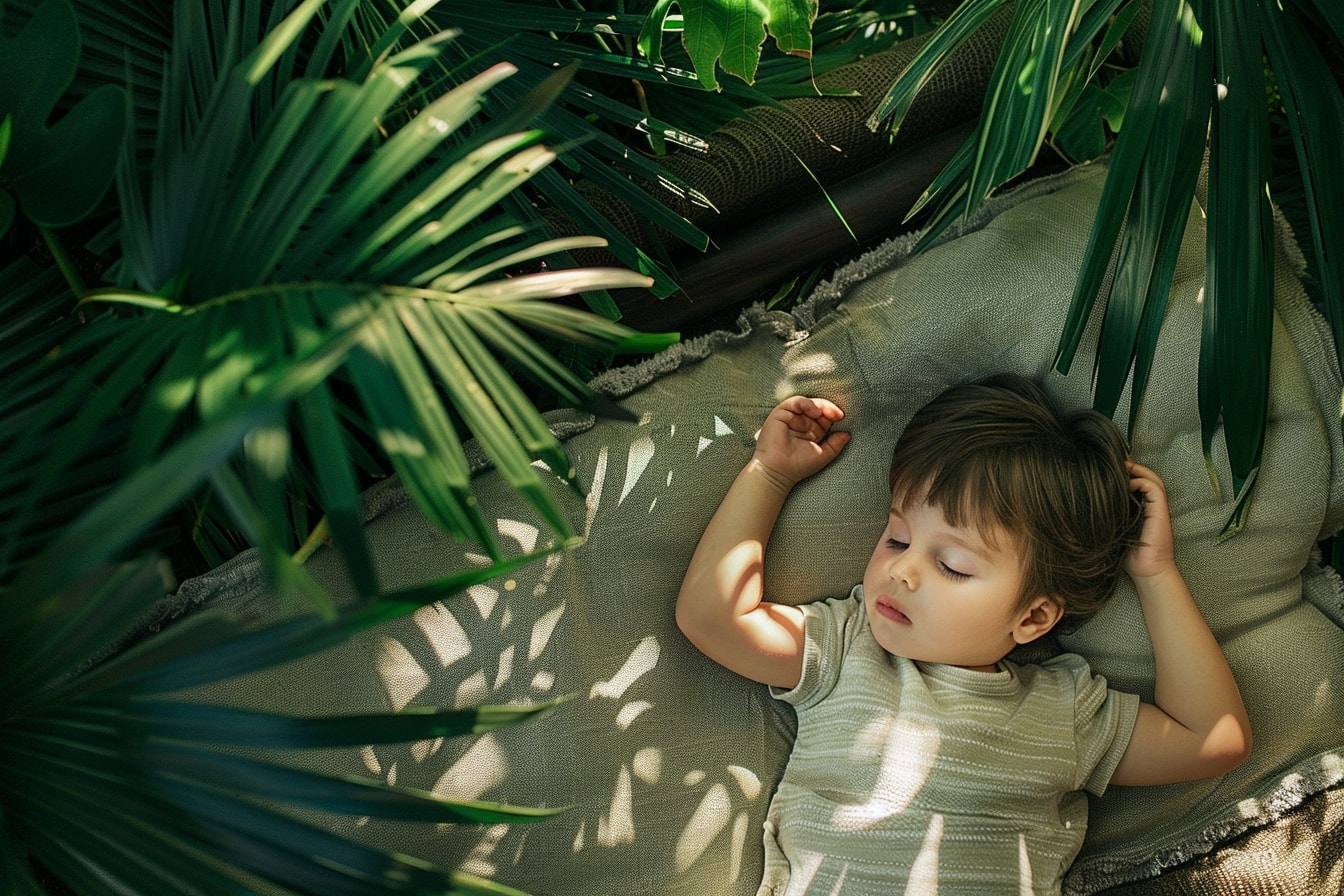
The Science of Outdoor Sleep:
Let’s embark on a journey into the fascinating realm of outdoor sleep – a practice deeply rooted in the rhythms of nature and the innate wisdom of childhood. As parents, we intuitively understand the rejuvenating power of fresh air and sunlight, but what does science have to say about the benefits of outdoor sleep for our little ones?
Research has shown that exposure to natural light plays a crucial role in regulating our circadian rhythms – the internal clock that governs our sleep-wake cycle. For children, whose sleep patterns are still developing, spending time outdoors during the day can help synchronize their internal clocks with the natural day-night cycle, leading to more restful and rejuvenating sleep at night.
But it’s not just sunlight that works its magic on our children’s sleep – the quality of outdoor air also plays a significant role. Studies have found that outdoor air tends to be fresher and less polluted than indoor air, thanks to the abundance of oxygen-rich vegetation and the natural ventilation provided by open spaces. Breathing in this clean, oxygen-rich air can promote deeper, more restorative sleep, helping our little ones wake up feeling refreshed and energized.
And let’s not forget the myriad health benefits that come from spending time outdoors. Research has shown that exposure to nature can boost our immune system, reduce stress levels, and improve overall well-being. By incorporating outdoor sleep into our children’s routines, we’re not just enhancing their sleep quality – we’re also supporting their physical, emotional, and cognitive development in profound ways.
But perhaps the most compelling evidence for the benefits of outdoor sleep comes from observing children themselves. Take a moment to picture a child nestled in a cozy hammock, surrounded by the gentle rustle of leaves and the warm embrace of sunlight. Notice how their breathing slows, their bodies relax, and their minds drift off into a peaceful slumber. It’s a scene that speaks volumes about the innate connection between children and the natural world, and the profound impact it can have on their sleep and overall well-being.
As parents and caregivers, we have the opportunity to harness the transformative power of outdoor sleep, creating nurturing environments that honor our children’s innate need for connection, exploration, and rest. So let’s step outside, breathe in the fresh air, and embrace the magic of outdoor sleep, knowing that we’re nourishing our children’s bodies, minds, and spirits in ways that will shape their lives for years to come.
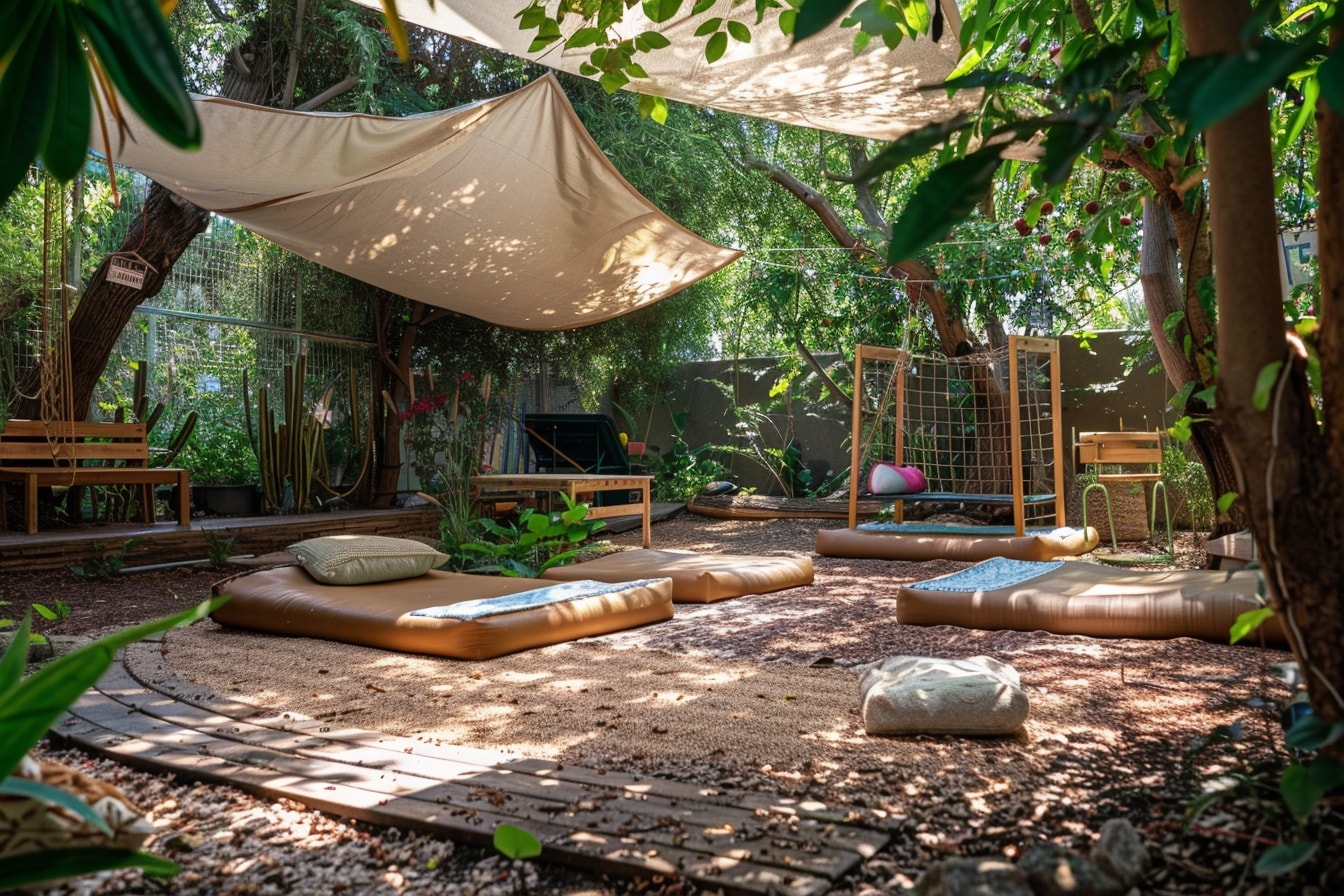
Practical Implementation in Montessori Settings:
Now that we’ve explored the philosophy and science behind outdoor sleep, it’s time to roll up our sleeves and dive into the practical aspects of implementing this practice in Montessori settings. From creating inviting outdoor sleep environments to establishing routines that honor children’s autonomy, there’s much to consider as we embark on this journey.
- Designing the Outdoor Sleep Space: Start by selecting a tranquil spot in your outdoor environment that offers shade, protection from the elements, and a sense of privacy. Consider incorporating natural elements such as soft grass, cozy blankets, and gently swaying trees to create a soothing and inviting atmosphere. Provide comfortable sleeping mats or hammocks where children can rest peacefully, surrounded by the sights, sounds, and scents of nature.
- Establishing Routines and Rituals: In Montessori philosophy, consistency and predictability are key to fostering a sense of security and independence. Create a daily routine for outdoor sleep that aligns with children’s natural sleep patterns and allows for flexibility and exploration. Encourage children to participate in preparing for naptime by choosing their own blankets, pillows, or stuffed animals, empowering them to take ownership of their sleep experience.
- Fostering Independence and Self-Regulation: One of the core principles of Montessori education is to provide children with the tools and opportunities to become independent learners and problem-solvers. As children grow and develop, gradually encourage them to take an active role in their outdoor sleep routine, whether it’s choosing their sleeping spot, arranging their bedding, or setting their own sleep schedule. By empowering children to make decisions about their sleep environment, we’re not only fostering independence but also nurturing their sense of agency and self-confidence.
- Creating a Culture of Respect and Communication: In any educational setting, communication and collaboration are essential for success. Foster a culture of open dialogue and mutual respect among parents, educators, and children, where everyone’s voices are heard and valued. Encourage parents to share their concerns, preferences, and feedback regarding outdoor sleep, and be receptive to their input. By working together as a community, we can create inclusive and nurturing environments that support children’s holistic development.
As we embark on this journey of implementing outdoor sleep in Montessori settings, let’s remember the profound impact it can have on children’s physical, emotional, and cognitive well-being. By creating environments that honor children’s innate connection to nature and their intrinsic desire for autonomy and exploration, we’re laying the foundation for a lifetime of joyful learning and growth.
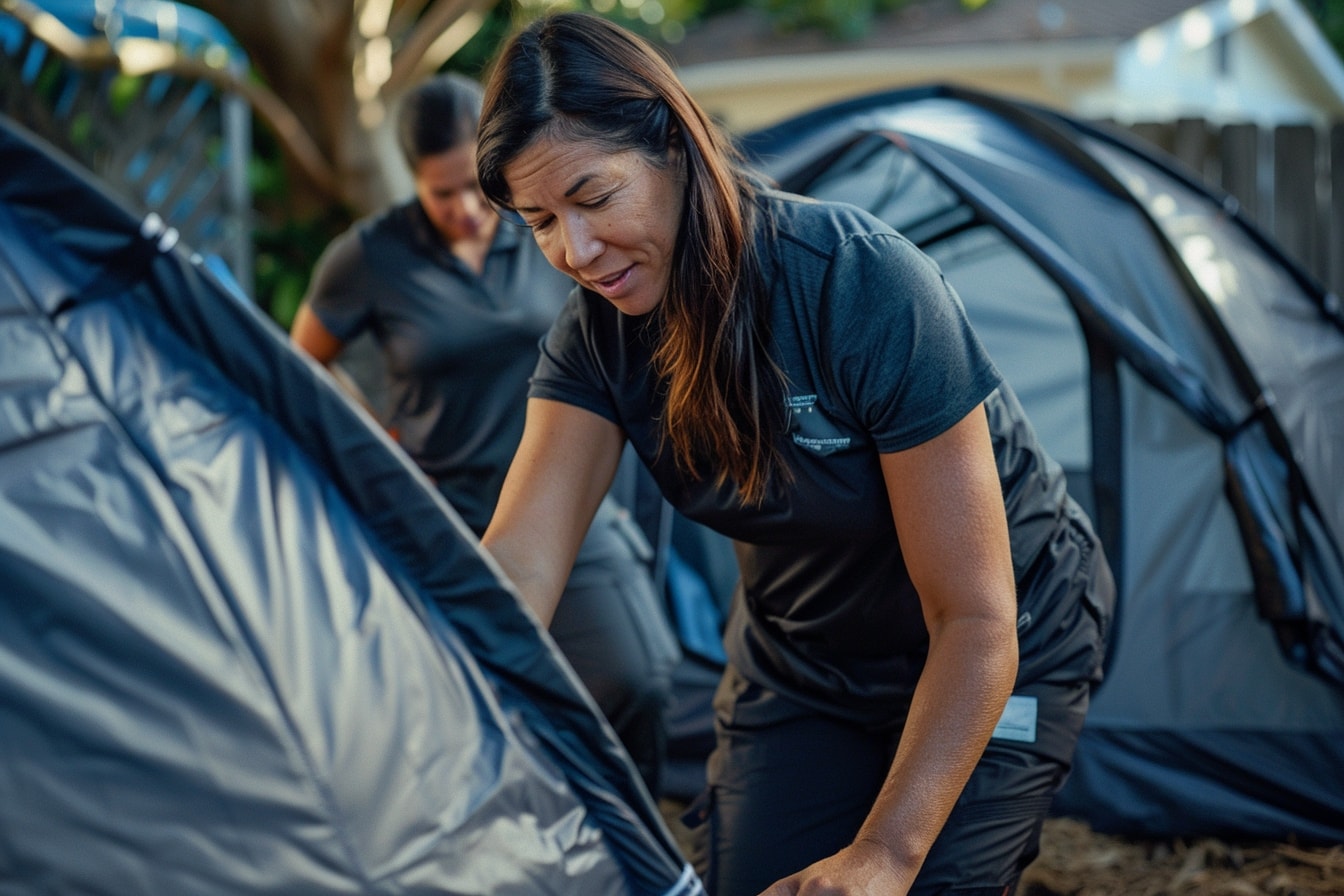
Overcoming Challenges:
As we strive to incorporate outdoor sleep into Montessori settings, we inevitably encounter a few bumps along the way. From unpredictable weather patterns to safety concerns, there are challenges to navigate and overcome. But fear not, dear readers, for with creativity, resourcefulness, and a dash of Caribbean resilience, we can surmount any obstacle that comes our way.
- Weather Woes: Ah, the ever-changing whims of Mother Nature! While we can’t control the weather, we can certainly adapt to it. Invest in durable outdoor sleep gear, such as waterproof blankets or canopy tents, to shield children from rain or excessive sun exposure. Keep a close eye on weather forecasts and be prepared to move naptime indoors if necessary, ensuring children’s safety and comfort at all times.
- Safety First: When it comes to outdoor sleep, safety is paramount. Take proactive measures to create a secure sleep environment, free from hazards such as sharp objects, insects, or uneven terrain. Regularly inspect outdoor sleep spaces for potential dangers and address any concerns promptly. Educate children about basic safety rules, such as staying within designated areas and seeking assistance if they need help. By prioritizing safety, we can create a nurturing and worry-free environment for outdoor naptime.
- Logistical Hurdles: From transporting bedding to finding suitable outdoor locations, there are logistical challenges to consider when implementing outdoor sleep. Break down these tasks into manageable steps and enlist the help of parents, educators, and community members to share the load. Explore creative solutions, such as setting up portable sleep stations or partnering with local parks or nature reserves to access outdoor sleeping areas. By working together and thinking outside the box, we can overcome logistical hurdles and create memorable outdoor sleep experiences for children.
- Resistance and Skepticism: Change can be met with resistance, especially when it challenges established norms or routines. Address any concerns or skepticism from parents, educators, or caregivers with empathy and understanding. Share research findings, success stories, and practical tips to alleviate fears and build confidence in the benefits of outdoor sleep. Encourage open dialogue and collaboration, inviting stakeholders to participate in the decision-making process and share their perspectives. By fostering a culture of trust and transparency, we can overcome resistance and create a shared vision for outdoor sleep in Montessori settings.
As we navigate the twists and turns of implementing outdoor sleep in Montessori settings, let’s embrace each challenge as an opportunity for growth and learning. By approaching obstacles with creativity, resilience, and a spirit of collaboration, we can create nurturing environments where children can thrive, both indoors and out.
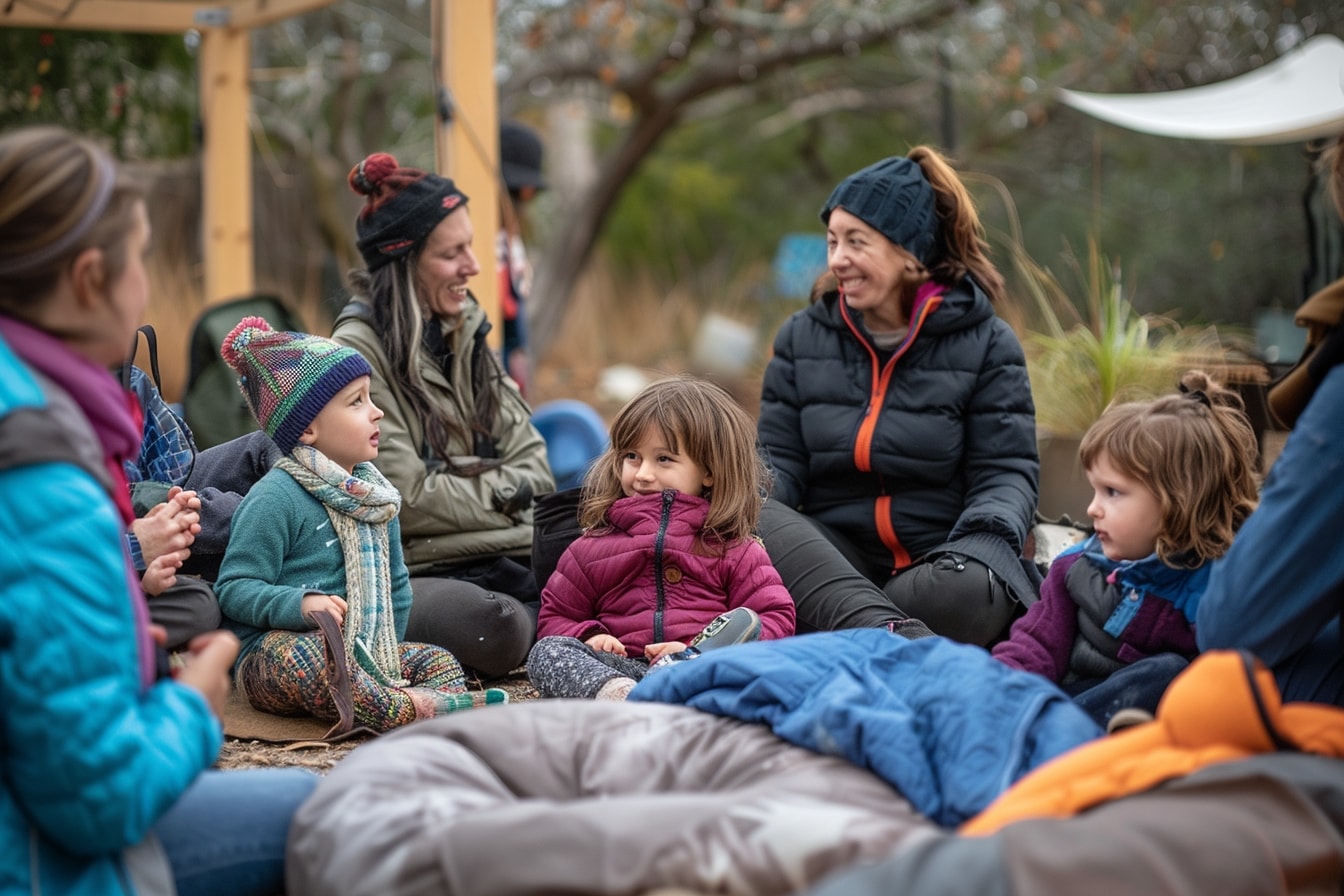
Community Engagement and Support:
As we embark on the journey of integrating outdoor sleep into Montessori settings, we are reminded of the power of community – a collective force that uplifts, inspires, and sustains us in our endeavors. In the rich tapestry of Caribbean culture, community is not just a concept; it’s a way of life – a vibrant mosaic of shared values, traditions, and aspirations.
- Building Bridges: Cultivating strong relationships with parents, educators, and caregivers is essential for success. Create opportunities for open dialogue and collaboration, inviting input and feedback from all stakeholders. Host parent meetings or workshops to share information about the benefits of outdoor sleep and brainstorm ideas for implementation. By involving the community in the decision-making process, we foster a sense of ownership and investment in the success of outdoor sleep initiatives.
- Sharing Resources: In the spirit of collaboration, let’s pool our resources and expertise to support one another on this journey. Create a repository of helpful resources, such as articles, books, and online forums, where parents and educators can access information and exchange ideas. Partner with local organizations or businesses to provide funding or donations for outdoor sleep equipment and supplies. By leveraging the collective wisdom and generosity of our community, we can overcome barriers and create inclusive and sustainable outdoor sleep programs.
- Empowering Parents: Parents are our most valuable allies in promoting outdoor sleep and holistic child development. Equip parents with the knowledge and skills they need to support outdoor sleep routines at home, providing practical tips and guidance for creating nurturing sleep environments. Encourage parents to share their experiences and insights with one another, fostering a sense of camaraderie and mutual support. By empowering parents as partners in the educational process, we strengthen the bonds of community and create a network of support for children’s well-being.
- Celebrating Diversity: In our diverse Caribbean community, we celebrate the rich tapestry of cultures, languages, and traditions that make us unique. Embrace cultural diversity as a source of strength and inspiration, weaving elements of Caribbean heritage into our outdoor sleep programs. Incorporate traditional storytelling, music, and art into naptime rituals, honoring the cultural identities and experiences of all children. By celebrating diversity and inclusivity, we create welcoming environments where every child feels valued, respected, and cherished.
As we come together as a community to embrace the transformative power of outdoor sleep, let’s remember the words of the African proverb: It takes a village to raise a child. Together, we can nurture the next generation with love, compassion, and a deep reverence for the natural world, ensuring a brighter and more beautiful future for all.
As we come to the end of our exploration into the world of Montessori and outdoor sleep, let us take a moment to reflect on the journey we’ve shared. From the sun-drenched shores of the Caribbean to the cozy corners of Montessori classrooms, we’ve uncovered the transformative power of connecting children with the natural world and nurturing their innate curiosity and independence.
Through the lens of Montessori philosophy, we’ve learned that education is not just about acquiring knowledge; it’s about cultivating a lifelong love of learning and a deep sense of connection to the world around us. By embracing outdoor sleep as a natural extension of Montessori principles, we’ve witnessed firsthand the profound impact it can have on children’s physical, emotional, and cognitive well-being.
But our journey doesn’t end here – it’s just the beginning of a new chapter in our collective quest to create nurturing environments where children can thrive, both indoors and out. As we move forward, let us hold fast to the values that have guided us – compassion, resilience, and a deep reverence for the natural world.
Let us continue to cultivate strong bonds of community, supporting one another as we navigate the joys and challenges of parenting and education. Let us celebrate the diversity of our Caribbean heritage, weaving its vibrant colors and rhythms into the fabric of our outdoor sleep programs.
And above all, let us never lose sight of the simple yet profound truth that lies at the heart of our journey – that the greatest gift we can give our children is the gift of connection: to themselves, to each other, and to the awe-inspiring beauty of the world around them.
So as we bid farewell to this chapter and set our sights on the horizon, let us do so with hearts full of gratitude, minds open to possibility, and a steadfast commitment to nurturing the next generation with love, compassion, and the boundless wonders of outdoor sleep.
Want to take your knowledge to the next level? Check out these must-read articles:
- Montessori and Positive Discipline: Nurturing Well-Behaved Infants
- Creating a Montessori-inspired Baby Registry: Practical and Purposeful Items
Organize your baby’s wardrobe with our baby clothes closet organizer products! Our organizers are designed specifically for baby clothes. Get your baby’s clothes neat and tidy with our selection of organizers – shop now!
Step into Sue Brown's World of Baby Care, where you'll find a treasure trove of knowledge and wisdom waiting to be explored. Sue's dedication to providing accurate and up-to-date information on baby care shines through in every article, blog post, and resource she shares. From newborn essentials to sleep training tips, breastfeeding advice to nurturing your baby's development, Sue covers a wide range of topics that are essential for every parent to know. Her warm and compassionate approach creates a sense of community and reassurance, making her website a safe haven for parents seeking guidance and support. Let Sue Brown be your partner in this beautiful journey of parenthood, as she empowers you to create a loving, nurturing, and thriving environment for your little one.
- Indoor Air Quality for Infant Respiratory Health - October 20, 2025
- Positive Discipline Foundations: Setting the Stage From Infancy - October 18, 2025
- 2025’s Most Innovative Baby Products Worth the Investment - October 16, 2025

